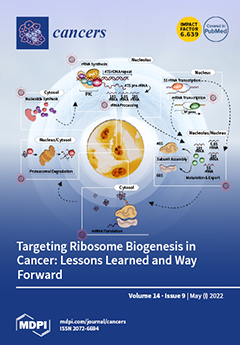Backgrounds: There are scarce data on whether immune checkpoint inhibitors (ICIs) increase the risk of cardiac dysfunction when used with cardiotoxic agents. Thus, we evaluated cardiac dysfunction in patients with sarcoma receiving doxorubicin with or without ICI using echocardiography and left ventricular global longitudinal strain (LVGLS). Methods: A total of 95 patients were included in this study. Echocardiography and LVGLS were evaluated at baseline and follow-up (at 3 and 6 months of chemotherapy) and compared with the doxorubicin (Dox;
n = 73) and concomitant ICI with doxorubicin (Dox-ICI;
n = 22) groups. Cancer therapy-related cardiac dysfunction (CTRCD) was defined as a left ventricular ejection fraction (LVEF) drop of >10% and LVEF of <50% (definite CTRCD), LVEF drop of >10%, LVEF of ≥50%, and LVGLS relative reduction of >15% (probable CTRCD) at six months. Results: There were no significant differences in age, cumulative dose of doxorubicin, and cardiovascular risk factors between the two groups. At baseline, the LVEF was similar in the Dox and Dox-ICI groups (
p = 0.493). In the Dox group, LVEF decreased to 59 ± 6% (Δ −7 ± 1.3%,
p < 0.001) and LVGLS decreased from −17.3 ± 3.2% to −15.4 ± 3.2% (Δ −10.1 ± −1.9%,
p < 0.001) at six months. In the Dox-ICI group, LVEF decreased to 55 ± 9% (Δ −9 ± 2.1%,
p < 0.001), along with a significant decrease in LVGLS (from −18.6 ± 1.9% to −15.3 ± 3.6%, Δ −12.4 ± −2.4%,
p < 0.001). Over a median follow-up of 192 days, there were no cases with clinical manifestations of fulminant myocarditis. In the Dox group, definite and probable CTRCD were observed in seven (10.1%) and five (7.4%) patients, respectively. In the Dox-ICI group, definite and probable CTRCD were observed in four (19%) and four (19%) patients, respectively. The total number of patients who developed CTRCD was significantly higher in the Dox-ICI group than in the Dox group (38.1% vs. 17.4%,
p = 0.042). Serum troponin-T level was significantly higher in the Dox-ICI group than in the Dox group (53.3 vs. 27.5 pg/mL,
p = 0.023). Conclusions: ICIs may increase the risk of CTRCD when used with cardiotoxic agents. CTRCD should be monitored in patients treated with ICIs by cardiac biomarkers and echocardiography, including LV-GLS.
Full article






